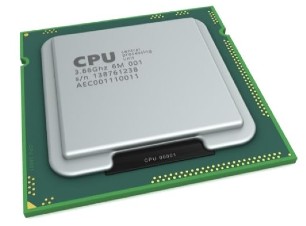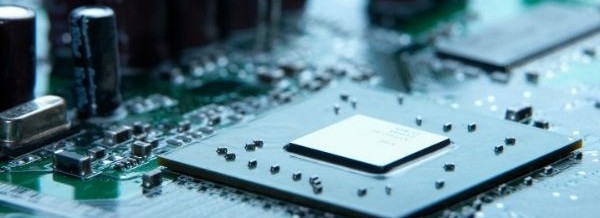A computer with a bad CPU can be an expensive doorstop, unable to perform useful work or run the software. With average technical skills in 2024, you can learn how to tell if CPU is bad. An effective and well-functioning processor is key to better computer performance.
Let’s find out the dead or damaged processor symptoms & signs. We’ll also be looking at how to tell if CPU is dying or fried.
How To Know If CPU Is Dead Or Damaged: Most Common Symptoms
1. Booting Issues
If your CPU is dead, it won’t go through the normal booting process. For instance, there will be no beep codes when you start the computer since the POST test isn’t passed. However, you might hear the fans running.
Apart from the absence of beep codes, you’ll notice a blank screen. You won’t get any response from your computer regardless of the number of times you click the mouse buttons or press the keyboard keys.
You can even confirm this further by looking at computer motherboard LEDs. If the LEDs are on when you turn on your computer but the system fails to pass the POST test, it’s evidence enough that the CPU is bad.
2. Frequent Shutdowns
A processor is likely to be dead or damaged if it’s subjected to heat. A CPU is known to generate a lot of heat that is dispelled by the fans.
If the fans are clogged with dust or other particles, it becomes difficult to expel the excessive heat. This might lead to the CPU overheating to the maximum unbearable levels.
To prevent further CPU damages, the motherboard takes measures to shut down your computer.
3. Beeping Noises
During startup, every computer runs a POST test. The POST test verifies if the PC components are operating properly.
If the POST test encounters problems in the processor, it’ll indicate through several beep tones. The number of beeps can help you determine whether the problem is related to the CPU or not. If the problem is CPU-related, there will be about 5-7 beeps.
4. Physical Damages
You can identify a dead or damaged CPU through its external appearance. If you expose the CPU to heat for longer periods, it can get damaged permanently.
You can notice charred marks on your CPU. There can also be burn marks around the CPU socket.
In such a case, the damage is irreversible and more severe. The only solution is replacing the CPU with a new one.
5. Freezing
When random freezing occurs while you’re using the system, CPU failure will happen. This might happen immediately after you log into your operating system.
In such a case, your computer might become completely unresponsive. No matter how much you try, you can’t get over the problem unless you restart the system.
6. Blue Screen of Death
When a computer encounters severe irrecoverable damage, it’ll display a blue screen of death error. The error can result from anything from a bad motherboard, CPU, or RAM.
If the problem is with the CPU, the BSOD is displayed along with the code ”0x00000”. You can search for specific error codes in google for further confirmation.
How To Test If CPU Is Bad
You can employ several approaches to troubleshoot your CPU to test if it’s bad or not. Below are some recommendations:
Visual Hardware Check
To visual check your CPU, you need to remove it from the computer. After removing the CPU, check for any bent pins on the side inserted into the computer motherboard.
If there is a bent pin, there is a high chance it’s causing problems with the CPU. You can try bending back the bent pins on the CPU to correct the issue.
However, it can break off while bending it back, forcing you to replace the whole CPU. If a visual check fails to show obvious visible problems, there are several software utility or hardware tools in 2024 that you can employ to diagnose the problem.
Hardware and Software Solutions
Below are software programs that you can employ to test your computer’s CPU in 2024. However, with the wide variety and complexity of computer CPUs, this software might fail to detect all types of failure.
- Intel Processor Diagnostic Tool: If you own an Intel processor, this is the best software to test it. The software is free and very effective at testing processors.
- PC-doctor: This is a fantastic solution for technicians and service centers to diagnose computer hardware challenges such as CPU and motherboard.
- Ultra-X: This is also another great product that you can employ to test your computer CPU.
Apart from understanding how to tell if CPU is dying, you should also know why a CPU goes bad. Below are some reasons:
- Age: We all know that every machine or component has its limits. For instance, a computer has a lifespan of about five years.
- Heat: As we have seen above, overheating a CPU causes damages to it. It’sIt’s common in situations where the room temperature is over 80 degrees Fahrenheit.
- Stress or overclocking: CPUs aren’t created equal and are designed for specific tasks. Over-stressing your CPU causes damage.
- Electrical power surge: Any high voltage spike can cause damage to your CPU.

Signs of Bad CPU FAQ
How To Tell If CPU Is Damaged From Overheating
Even though overheating can damage a CPU, the thermal shutdown is meant to shut it down before real damage occurs. However, in case of CPU damage, you should tell whether it resulted from overheating to prevent such from happening again in the future.
Below as signs that show your CPU damage resulted from overheating:
- The computer boots up normally, but the automatically shuts down after a short period.
- There is evidence of CPU throttling.
- The reported CPU operating frequency becomes less than normal.
- The system or CPU fan is excessive.
- General system slowness.
If your CPU is damaged, you should troubleshoot it to know whether it resulted from overheating or not. This will help you prevent any damage to the replacement. For an existing or new build system that was modified:
- Check the fan status and operation
- Check thermal solution installation
- Update BIOS or load BIOS default
- Check the air ventilation
For an existing system without changes:
- Check the fan operation
- Check for dust on the fans
- Update BIOS or load BIOS default
- Check thermal materials
- Undo recent changes
How To Tell If A CPU Is Fried
If your CPU is fried as a result of overheating, it’ll be internally damaged. In such a case, there won’t be burnt pads or pins. We recommend that you borrow or purchase a similar CPU for testing.
A CPU can get fried if you buy poor-quality components. It could also result from motherboard failures, CPU cooler shorts, PSU failures, insufficient cooling, an improperly secured heat sink, or having an old thermal conducting material.
The symptoms of a fried CPU are similar to those of one damaged from overheating.
Final Words About How To Tell If CPU Is Bad
It’s important that you learn how to tell if CPU is bad to keep your computer up and running always. Going through this guide will help you understand dead or damaged processor symptoms & signs.
If you conclude that your CPU is bad, you should look for a replacement. However, if you aren’t sure of the parts you need, you should keep in touch with a computer technician.
We hope that you keep your computer in good shape and effective performance.
Table of Contents

